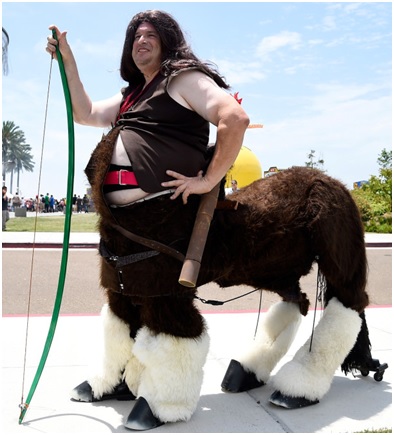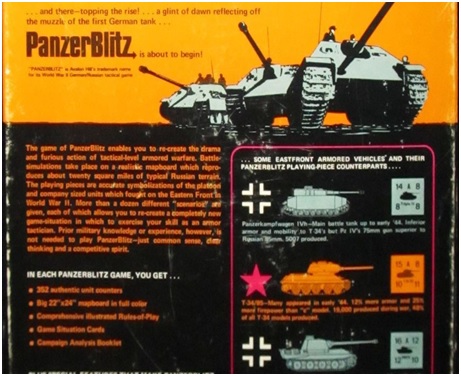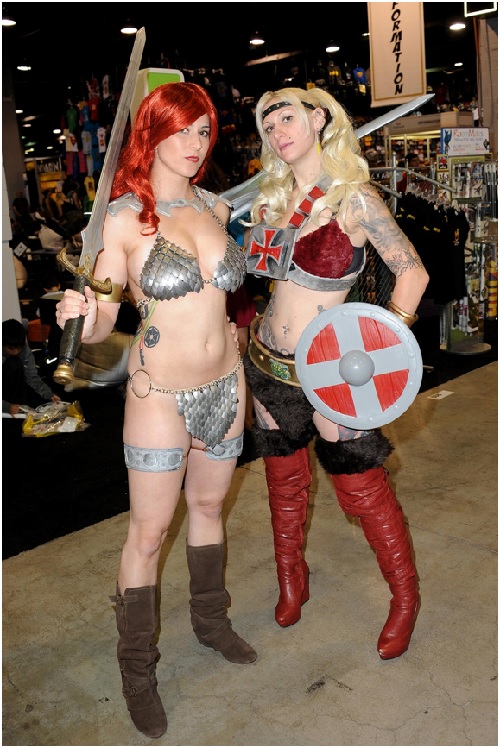Intermarkets' Privacy Policy
Donate to Ace of Spades HQ!
aceofspadeshq at gee mail.com
Buck:
buck.throckmorton at protonmail.com
CBD:
cbd at cutjibnewsletter.com
joe mannix:
mannix2024 at proton.me
MisHum:
petmorons at gee mail.com
J.J. Sefton:
sefton at cutjibnewsletter.com
What is an "influencer" these days?
The
Daily Tech News 13 December 2025
Thanks For The Memories
Friday Night Cafe
Surprise! Maryland Governor and Candidate for Democrat Nominee for President Wes Moore Has Long History of Lying About His War Record and Academic Record
The Week in Woke
Four Years Too Late, The New York Times Admits That Biden Pursued a Reckless Policy of Unlimited Illegal Immigration -- But Only In Service of New Narrative That Only Biden Favored Open Borders While the Rest of the Democrat Party Opposed It
Indiana Cucks Refuse to Redraw Congressional Map Even As Democrats Attempt to Impeach Trump Again (and Will Impeach Him Once They Retake the House)
Jim Sunk New Dawn 2025
Jewells45 2025
Bandersnatch 2024
GnuBreed 2024
Captain Hate 2023
moon_over_vermont 2023
westminsterdogshow 2023
Ann Wilson(Empire1) 2022
Dave In Texas 2022
Jesse in D.C. 2022
OregonMuse 2022
redc1c4 2021
Tami 2021
Chavez the Hugo 2020
Ibguy 2020
Rickl 2019
Joffen 2014
maildrop62 at proton dot me
TBD
Chess And Dress Thread [NaCly Dog}
Oregon Muse always mentions that his posts are open to other games besides chess. I will touch on the Golden Age of Board Wargames, which I define as 1965-1982. For more details and depth, various Wikipedia articles are good resources, as is an article on the business of wargaming from Greg Costikyan: SPI Died for Your Sins.
These pictures are from a variety of different Comic Conventions, which have many participants in costume. Our own Anna Puma provided one picture, but she is probably not in any of the pictures. Probably.







Unlike the abstract game chess, wargames try to simulate conflict with varying degrees of realism. War games had existed for military use since Prussian times. The US Navy at the Naval War College made extensive use of games to examine a future conflict with Japan in the 1920s-1930s. It was an investment in the intellectual growth of naval officers. But wargames were not available to the general public.
The game Gettysburg, published in 1958, was the first modern commercial game about a historical battle. More games were published in subsequent years, and a hobby was born. The land game titles ranged from Waterloo, D-Day, Stalingrad, Africa Corps, to Blitzkrieg. Naval games included Bismarck, Midway, and Jutland. Richthofen’s War covered WWI air battles.
These games, with simple mechanics and easy to learn rules, may not have been realistic or historically accurate, but they were easy to play and a lot of fun. That was the Avalon Hill trademark.

The best selling wargame of all time was PanzerBlitz. It was a completely different game from those before. It involved small units fighting over a small area in Russia, in a short time. Each game turn was 6 minutes. The technical detail was amazing and it was history you could see and change. Tanks, infantry, cavalry, crew-serviced weapons, and artillery of all types were represented. There were many scenarios available, and with the counters present in the game, you could read a history book, get an order of battle, pick the right counters, and come up with a new scenario.
Another publisher, SPI, went for more realism, with more complex games on an amazing number of conflicts from Ancient Egypt all the way to battles in space. They became the center of the wargaming hobby, with 30K subscribers and an inner core of 1K lifetime subscribers. These individuals bought 100s of games each, and started conventions to play others. The company was a technical innovator, spreading the hobby.
Playing wargames taught history, planning, and analysis. They act as time machines. What ifs were at the heart of the gaming experience. The past could be changed in a game. Future war possibilities could be examined. For example, the possibility of war between NATO and the USSR in the 1980s-1990s spawned many games.
The end of the hobby as a common pastime was when SPI went under in 1982. Their business execution was poor. They were sold for pennies on the dollar to another company that was a minority creditor. That company did not honor existing subscriptions. Just like that, sales collapsed.
Wargames continued to evolve, up to the mega games of GDW and GRD, with large playing maps covering all of Europe in WWII at 16 miles per hex, thousands of counters, and rule books over 100 pages long. An Eastern Front game would cover an entire back room and take years to play. But the numbers of games sold were small.
Board wargames never recovered from pissing off the core of the hobby, the dedicated players.


Berserker-Dragonheads Division : " Nothing is real. It’s all fake and ghey in ..."
Eromero: "I've been saying this ever since the right started ..."
Eeyore: "121 103 OT- I thought that this question was handl ..."
fourseasons: " I saw a headline a few days about an interview F ..."
Eromero: "It’s time for pie and coffee break. ..."
the lower depths: "179 Of the four people I'd refer to as contrari ..."
bear with asymmetrical balls: "[i]A new report from @ncri_io shows that Nick Fuen ..."
Its Go Time Donald: "Two options 1. Young people have had it with A ..."
fourseasons: " Army, Navy, Marines and Coast Guard family. We ..."
Lincolntf: "GO ARMY, BEAT NAVY! (Loser goes to Venezuela) ..."
thatcrazyjerseyguy: "Another week, another lawsuit. A preservation gr ..."
What is an "influencer" these days?
The
Daily Tech News 13 December 2025
Thanks For The Memories
Friday Night Cafe
Surprise! Maryland Governor and Candidate for Democrat Nominee for President Wes Moore Has Long History of Lying About His War Record and Academic Record
The Week in Woke
Four Years Too Late, The New York Times Admits That Biden Pursued a Reckless Policy of Unlimited Illegal Immigration -- But Only In Service of New Narrative That Only Biden Favored Open Borders While the Rest of the Democrat Party Opposed It
Indiana Cucks Refuse to Redraw Congressional Map Even As Democrats Attempt to Impeach Trump Again (and Will Impeach Him Once They Retake the House)
Paul Anka Haiku Contest Announcement
Integrity SAT's: Entrance Exam for Paul Anka's Band
AllahPundit's Paul Anka 45's Collection
AnkaPundit: Paul Anka Takes Over the Site for a Weekend (Continues through to Monday's postings)
George Bush Slices Don Rumsfeld Like an F*ckin' Hammer
Democratic Forays into Erotica
New Shows On Gore's DNC/MTV Network
Nicknames for Potatoes, By People Who Really Hate Potatoes
Star Wars Euphemisms for Self-Abuse
Signs You're at an Iraqi "Wedding Party"
Signs Your Clown Has Gone Bad
Signs That You, Geroge Michael, Should Probably Just Give It Up
Signs of Hip-Hop Influence on John Kerry
NYT Headlines Spinning Bush's Jobs Boom
Things People Are More Likely to Say Than "Did You Hear What Al Franken Said Yesterday?"
Signs that Paul Krugman Has Lost His Frickin' Mind
All-Time Best NBA Players, According to Senator Robert Byrd
Other Bad Things About the Jews, According to the Koran
Signs That David Letterman Just Doesn't Care Anymore
Examples of Bob Kerrey's Insufferable Racial Jackassery
Signs Andy Rooney Is Going Senile
Other Judgments Dick Clarke Made About Condi Rice Based on Her Appearance
Collective Names for Groups of People
John Kerry's Other Vietnam Super-Pets
Cool Things About the XM8 Assault Rifle
Media-Approved Facts About the Democrat Spy
Changes to Make Christianity More "Inclusive"
Secret John Kerry Senatorial Accomplishments
John Edwards Campaign Excuses
John Kerry Pick-Up Lines
Changes Liberal Senator George Michell Will Make at Disney
Torments in Dog-Hell
The Ace of Spades HQ Sex-for-Money Skankathon
A D&D Guide to the Democratic Candidates
Margaret Cho: Just Not Funny
More Margaret Cho Abuse
Margaret Cho: Still Not Funny
Iraqi Prisoner Claims He Was Raped... By Woman
Wonkette Announces "Morning Zoo" Format
John Kerry's "Plan" Causes Surrender of Moqtada al-Sadr's Militia
World Muslim Leaders Apologize for Nick Berg's Beheading
Michael Moore Goes on Lunchtime Manhattan Death-Spree
Milestone: Oliver Willis Posts 400th "Fake News Article" Referencing Britney Spears
Liberal Economists Rue a "New Decade of Greed"
Artificial Insouciance: Maureen Dowd's Word Processor Revolts Against Her Numbing Imbecility
Intelligence Officials Eye Blogs for Tips
They Done Found Us Out, Cletus: Intrepid Internet Detective Figures Out Our Master Plan
Shock: Josh Marshall Almost Mentions Sarin Discovery in Iraq
Leather-Clad Biker Freaks Terrorize Australian Town
When Clinton Was President, Torture Was Cool
What Wonkette Means When She Explains What Tina Brown Means
Wonkette's Stand-Up Act
Wankette HQ Gay-Rumors Du Jour
Here's What's Bugging Me: Goose and Slider
My Own Micah Wright Style Confession of Dishonesty
Outraged "Conservatives" React to the FMA
An On-Line Impression of Dennis Miller Having Sex with a Kodiak Bear
The Story the Rightwing Media Refuses to Report!
Our Lunch with David "Glengarry Glen Ross" Mamet
The House of Love: Paul Krugman
A Michael Moore Mystery (TM)
The Dowd-O-Matic!
Liberal Consistency and Other Myths
Kepler's Laws of Liberal Media Bias
John Kerry-- The Splunge! Candidate
"Divisive" Politics & "Attacks on Patriotism" (very long)
The Donkey ("The Raven" parody)

